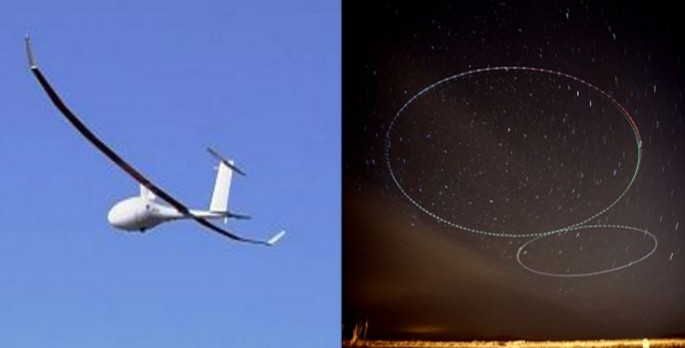An aerial drone taking part in a program sponsored by the U.S. Defense Advanced Research Projects Agency (DARPA) set a new world record for endurance by staying airborne for 56 hours straight.
The record for the longest nonstop, unrefueled flight was set by a drone named "VA001" developed by Vanilla Aircraft LLC based in Falls Church, Virginia.
VA001 remained airborne for more than two days and two nights, setting the record for an aircraft in this weight and power class. It took off Nov. 30 from New Mexico State University's Unmanned Air Systems Flight Test Center and flew at an altitude of between 1,980 to 2,286 meters. The unmanned aerial vehicle flew at an average speed of 105 km/h before landing on Dec. 2.
VA001 is backed by the DARPA. The UAV is designed to stay aloft for up to 10 days of nonstop flight, while carrying a 14 kilogram payload.
The flight was planned as a 120-hour mission. It ended early because weather forecasts predicting severe icing and range restrictions. The UAV landed with enough JP-8 fuel on board for an additional 90 hours of flying, or enough for a total of six days of flight.
The flight was certified as a world-duration record for combustion-powered UAVs in the 50-500 kilogram subclass (Fédération Aéronautique Internationale Class U-1.c Group 1).
A representative from the National Aeronautic Association was present to witness the record. The flight was the fourth-longest for any unmanned airplane and the 11th longest for an airplane of any type (manned or unmanned, solar or fuel-powered).
Originating and ending at Las Cruces International Airport, the flight was conducted under the authority of the New Mexico State University UAS test site designated by the Federal Aviation Administration (FAA).
"This effort represents tremendous and unprecedented coordination among civil, defense, academic, and private industry to bring a heretofore only imagined capability to reality," said Vanilla Aircraft CEO Rear Admiral Timothy Heely (Ret.).
"This record-breaking flight demonstrated the feasibility of designing a low-cost UAV able to take off from one side of a continent, fly to the other, perform its duties for a week and come back -- all on the same tank of fuel," said Jean-Charles Ledé, DARPA program manager.
Potential applications of the Vanilla drone include UAV-based communications and intelligence gathering. UAVs not only allow for stealth, they also reduce personnel and operating costs, according to Ledé.



























